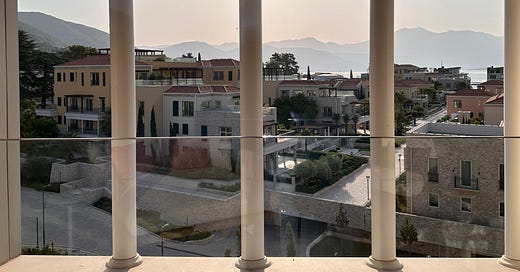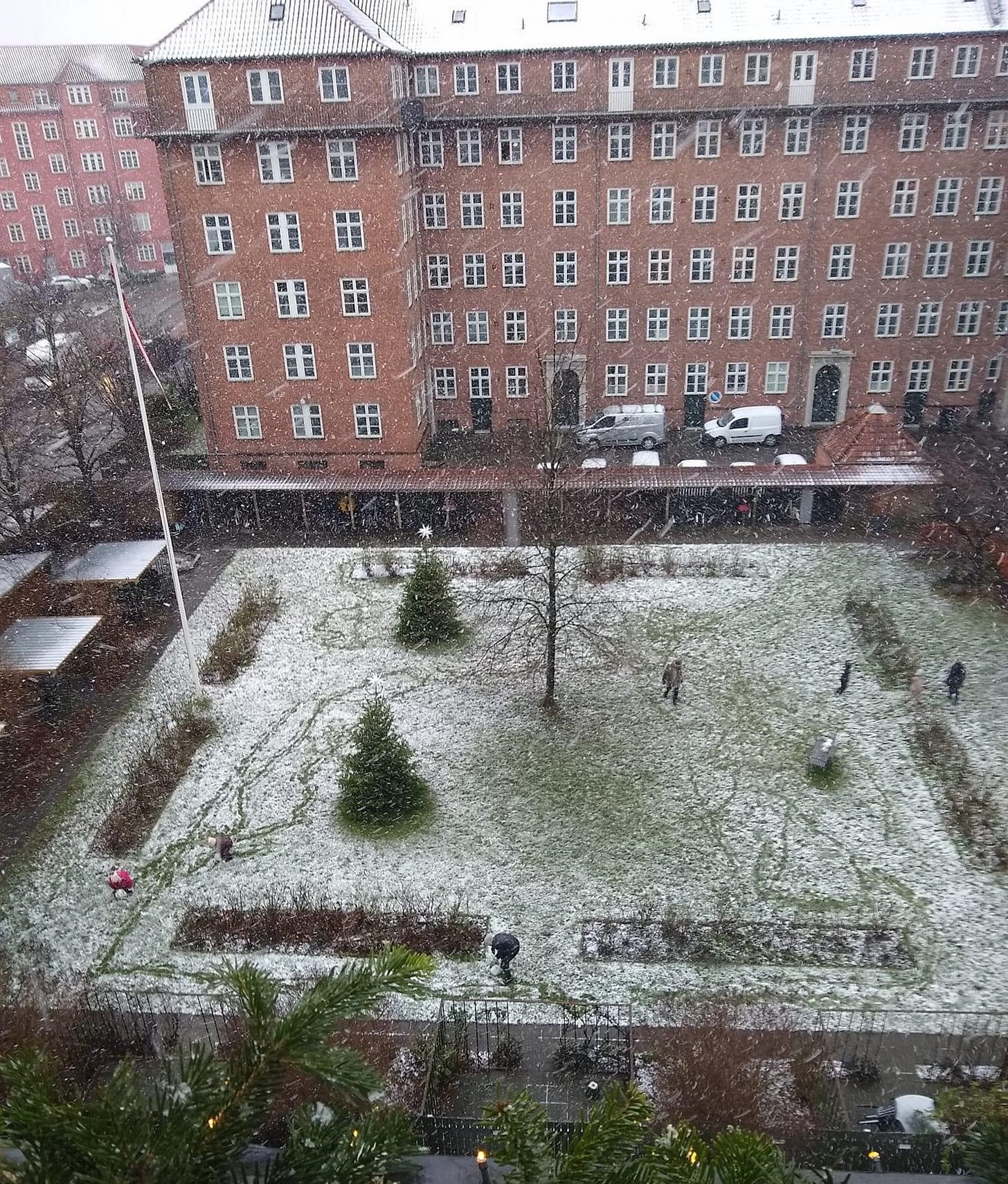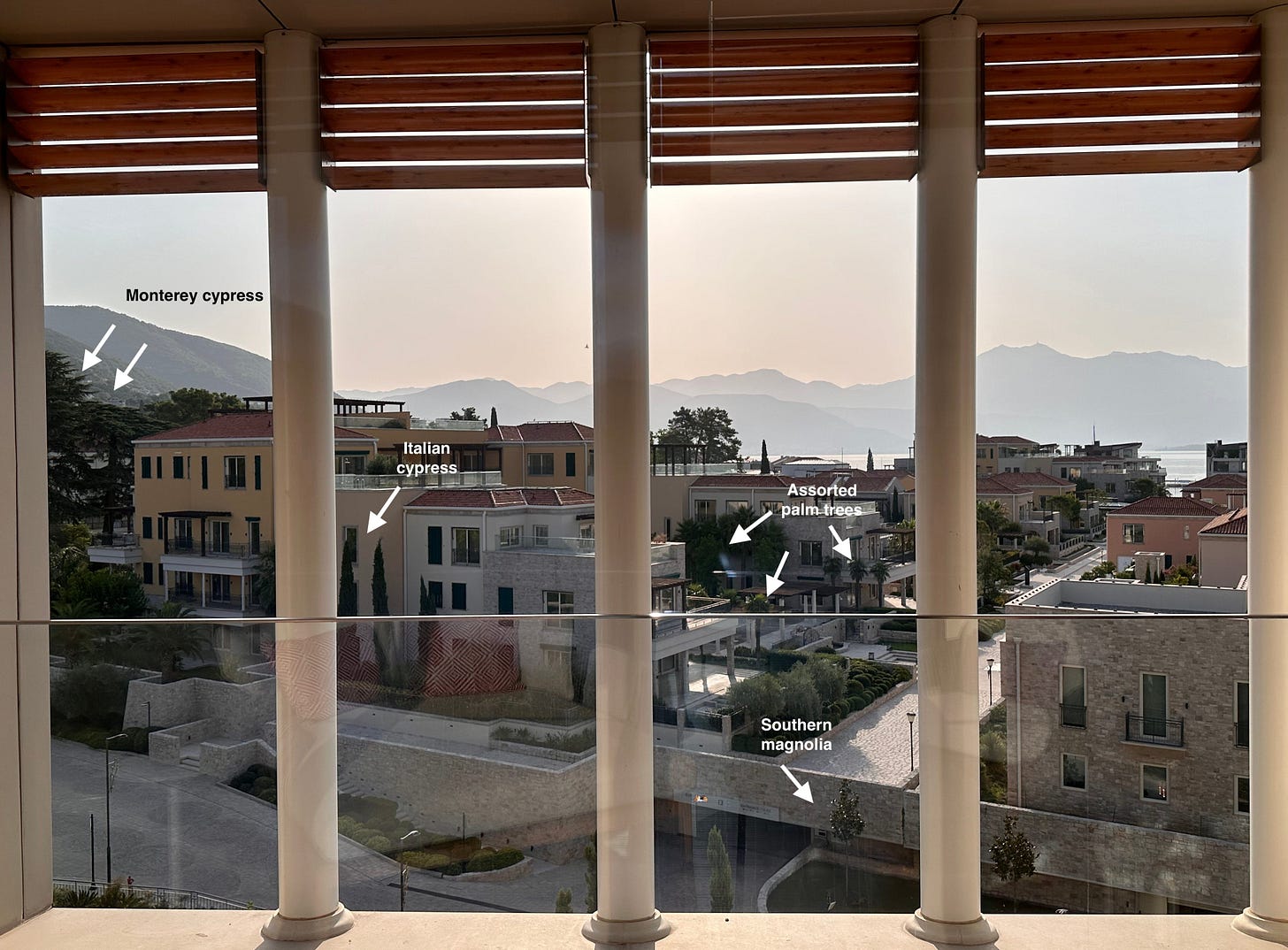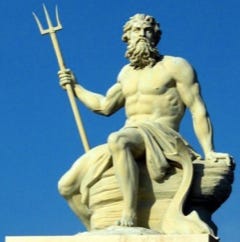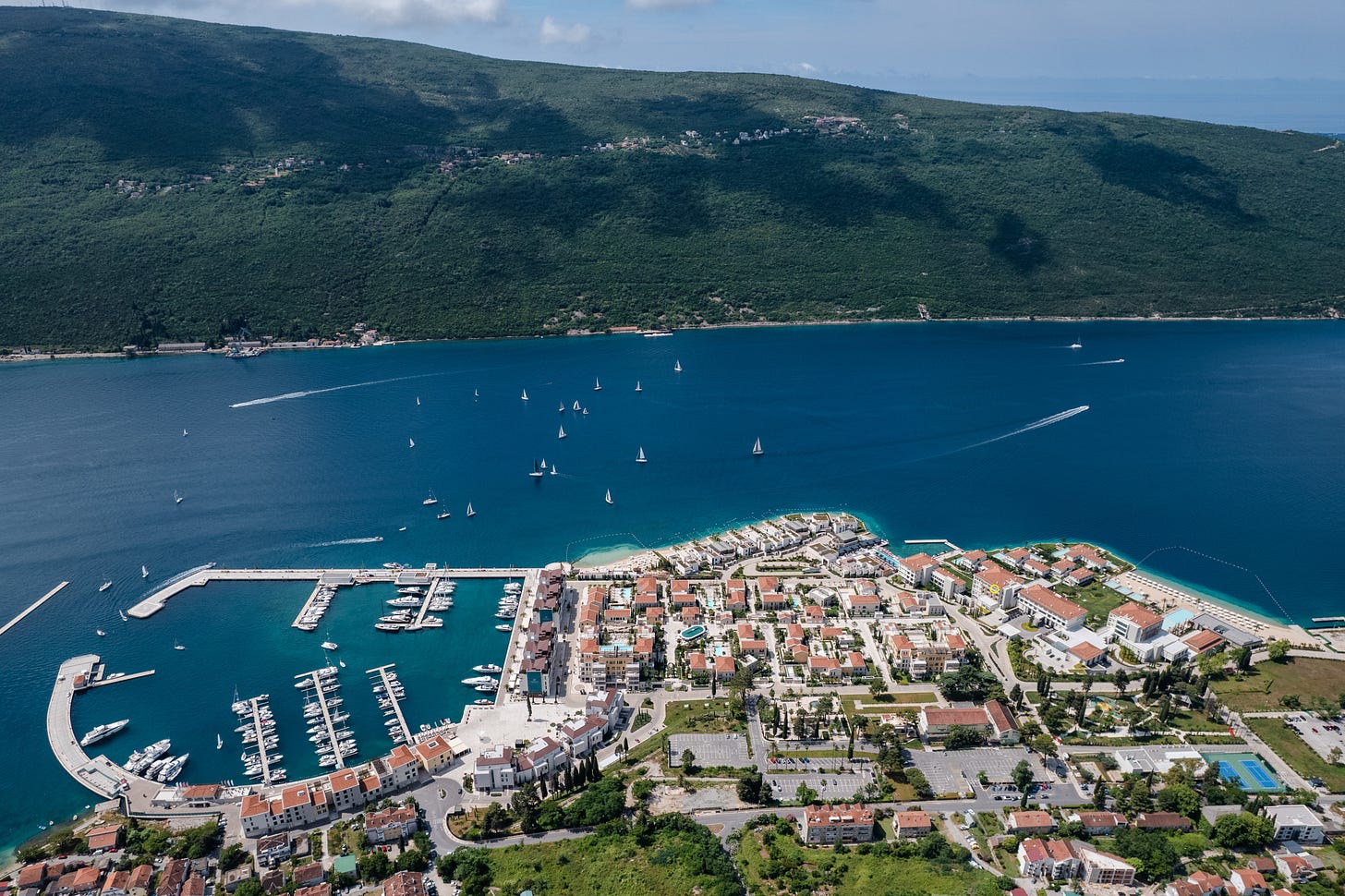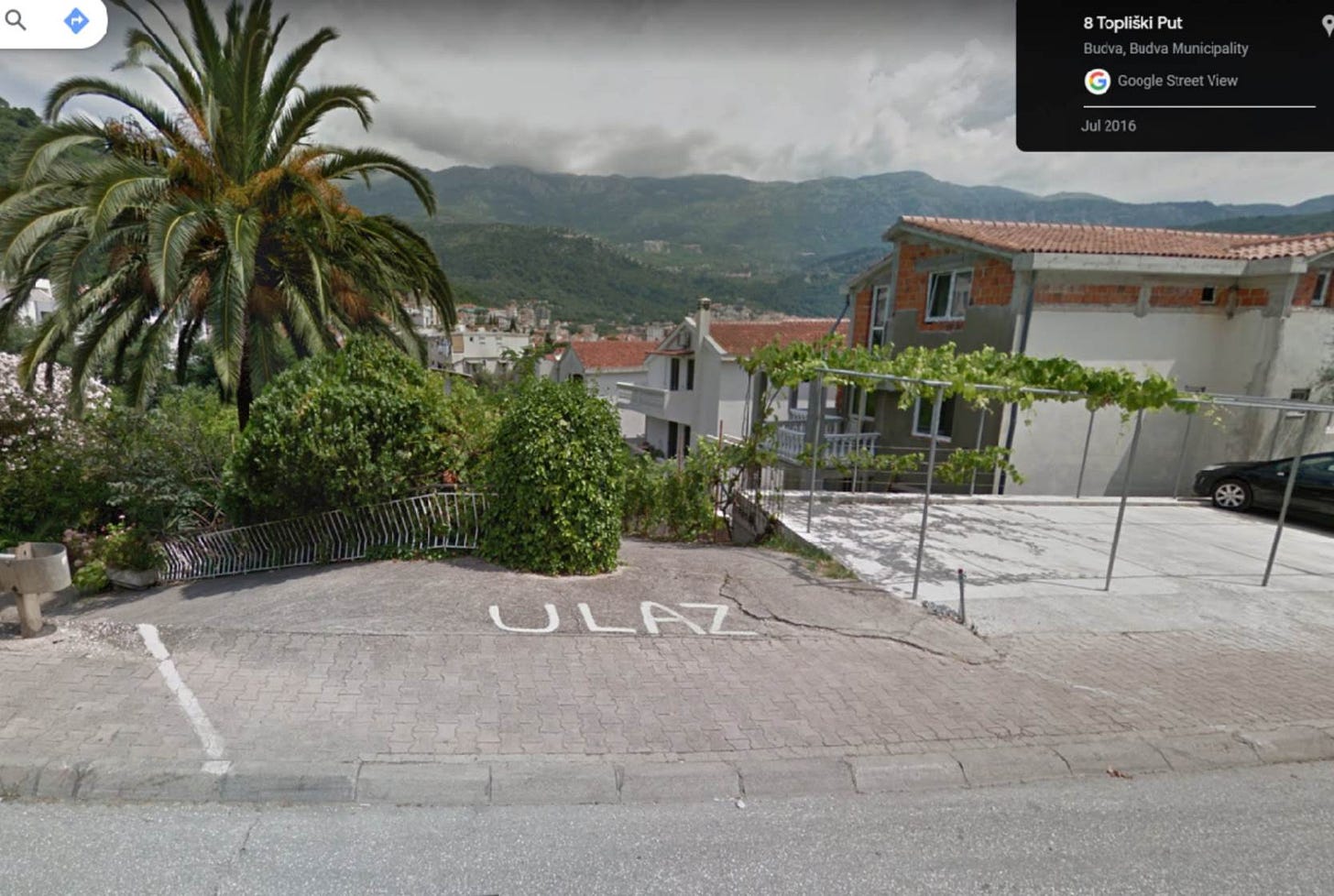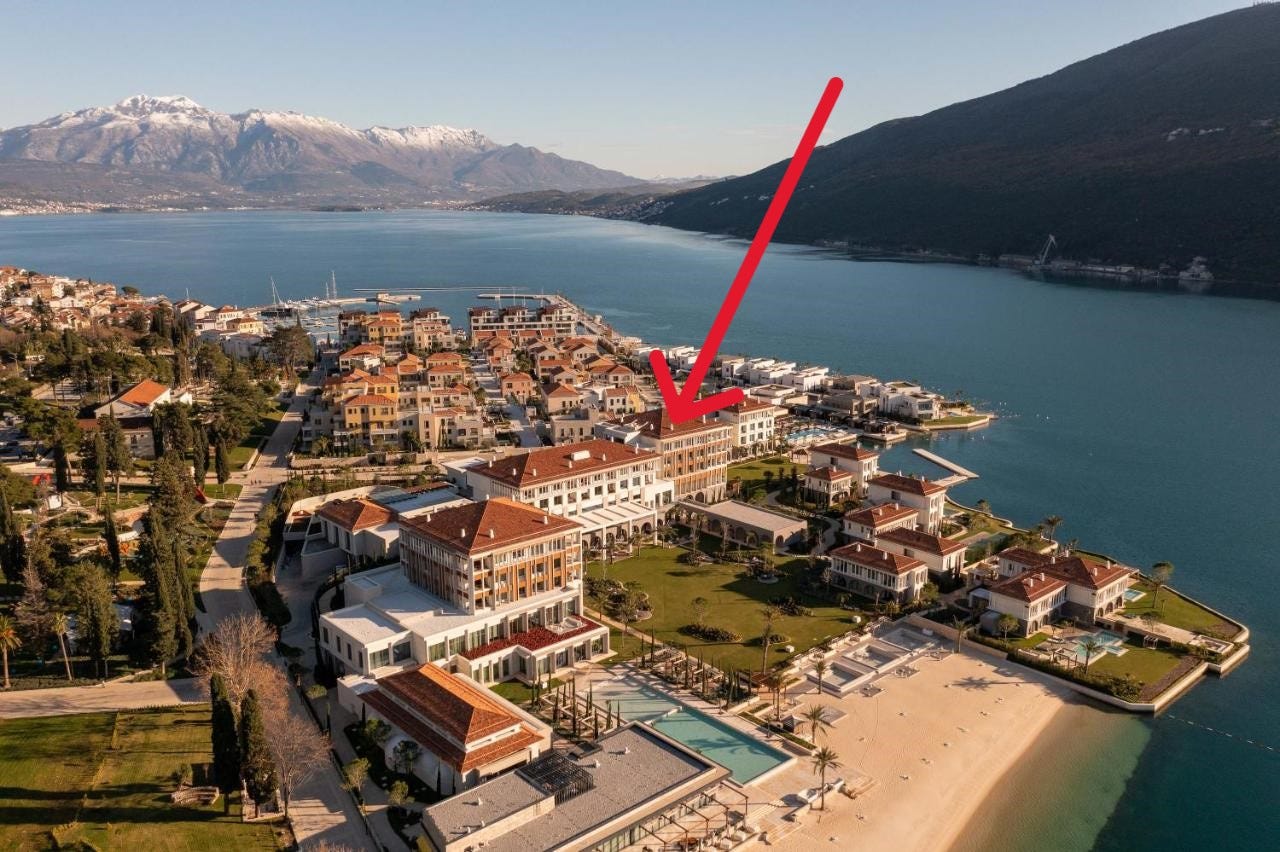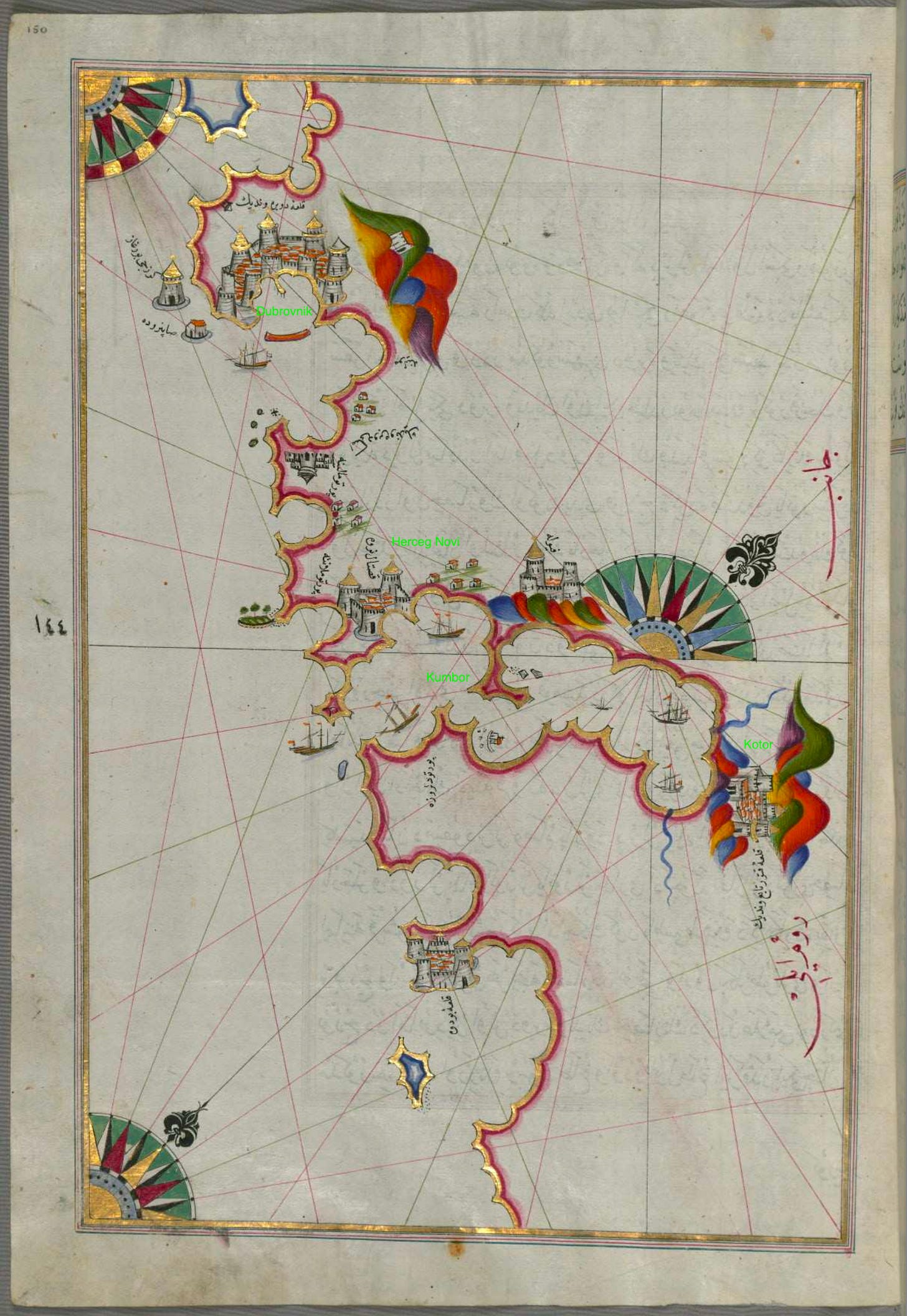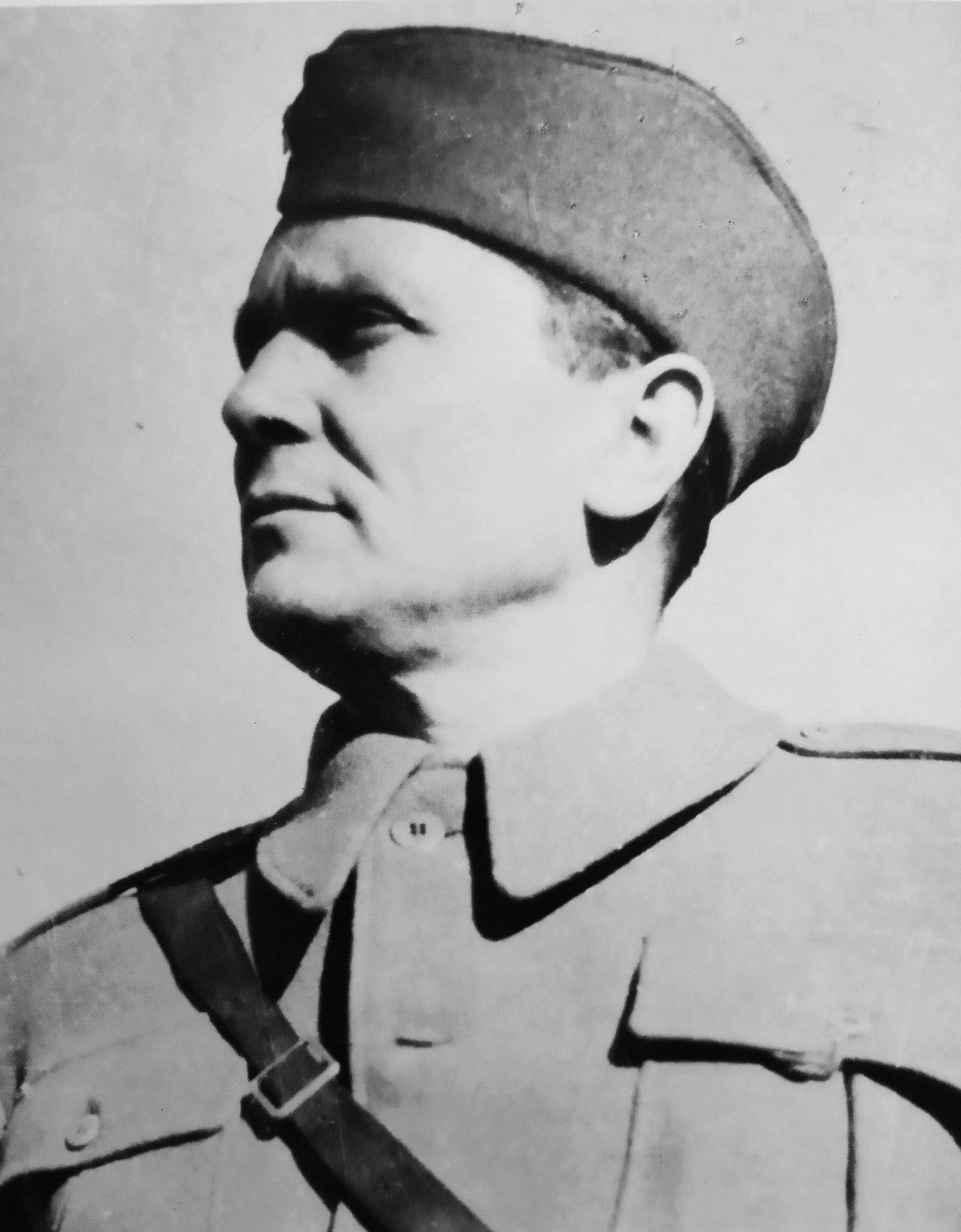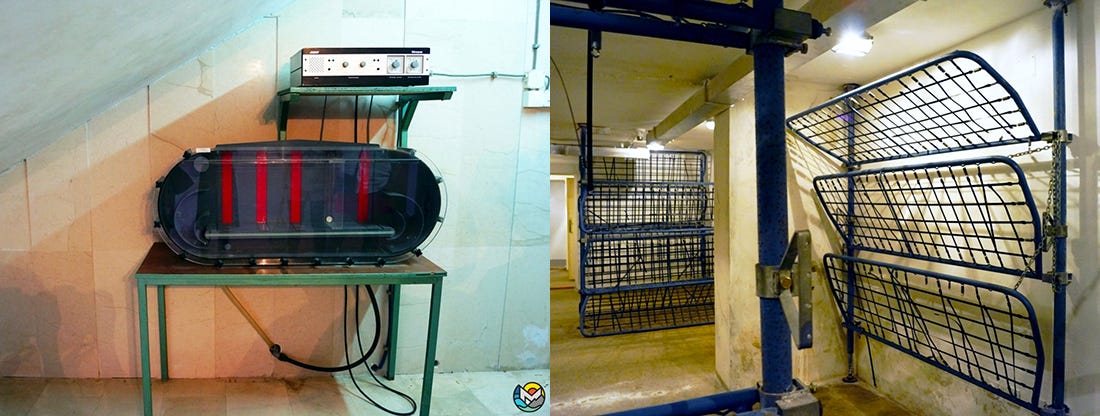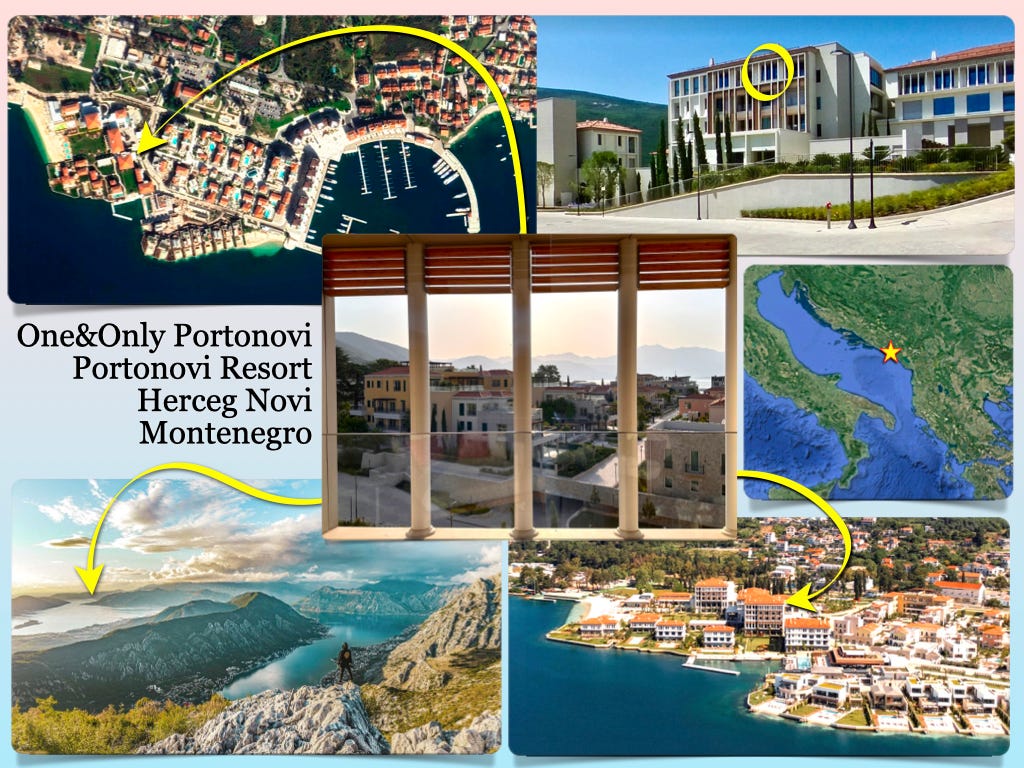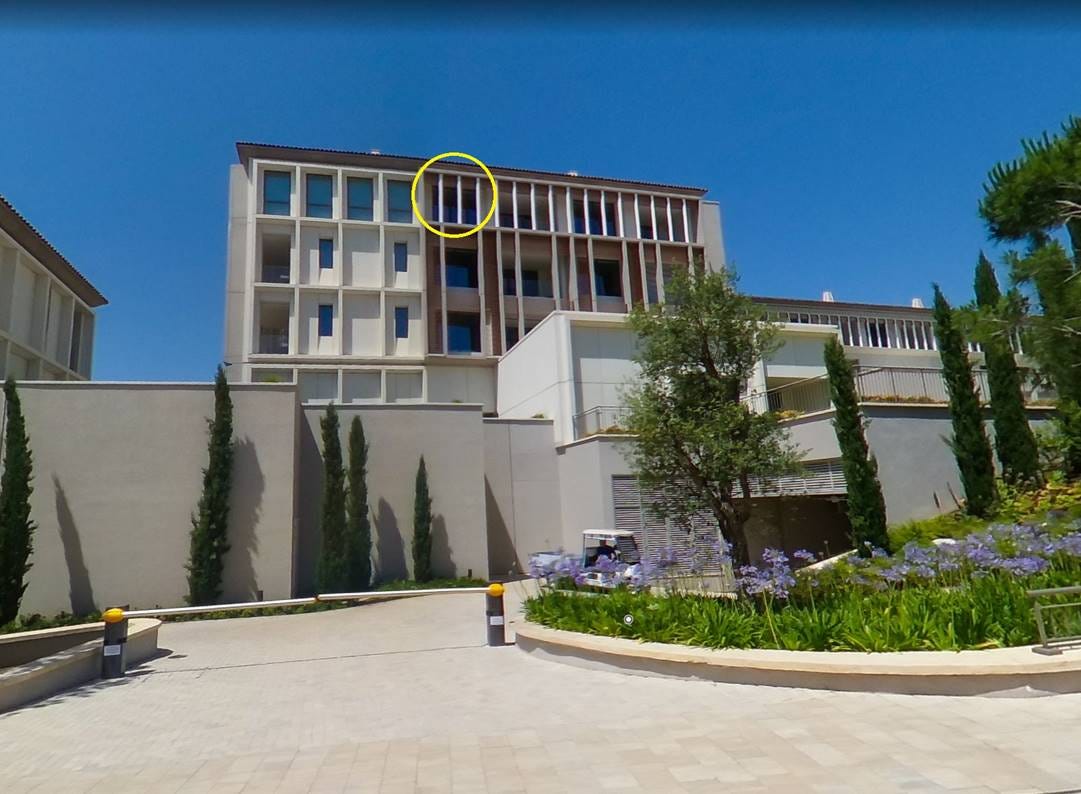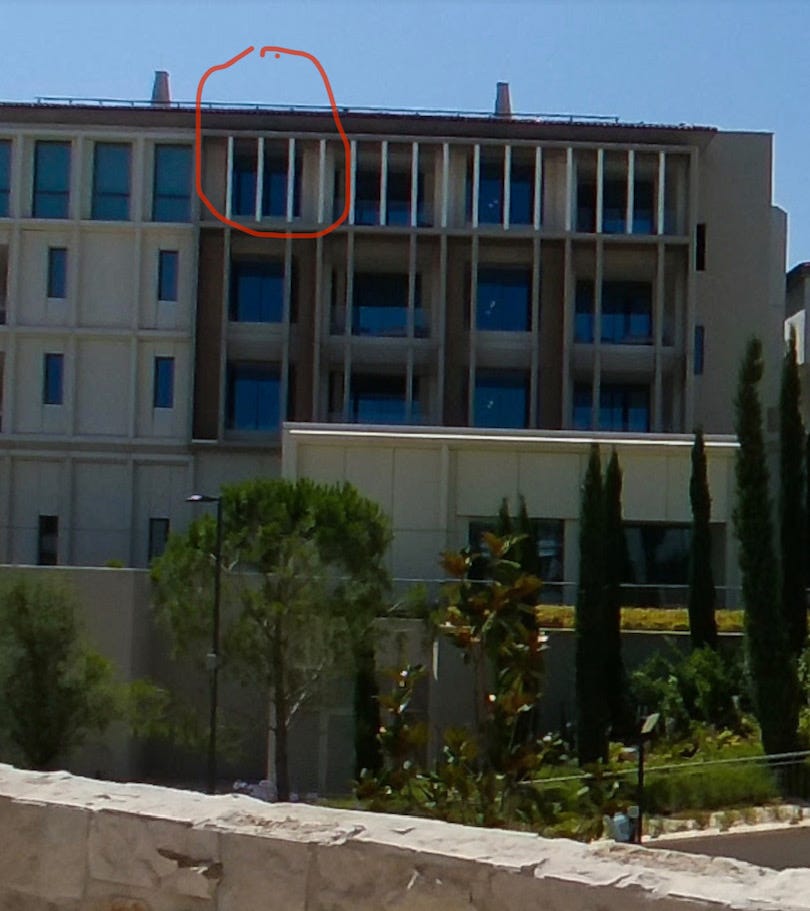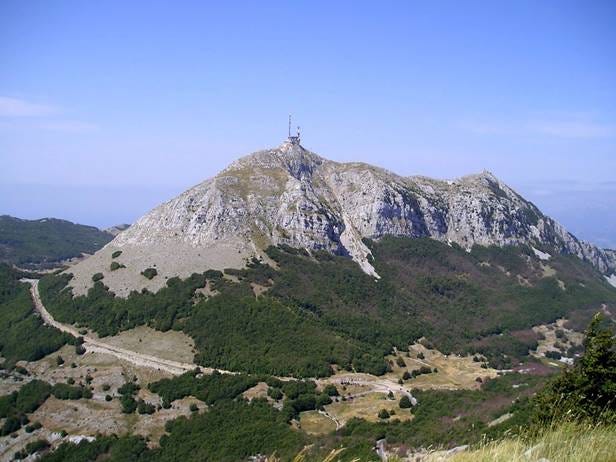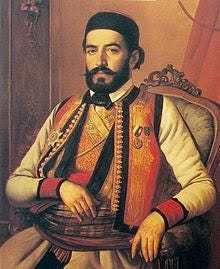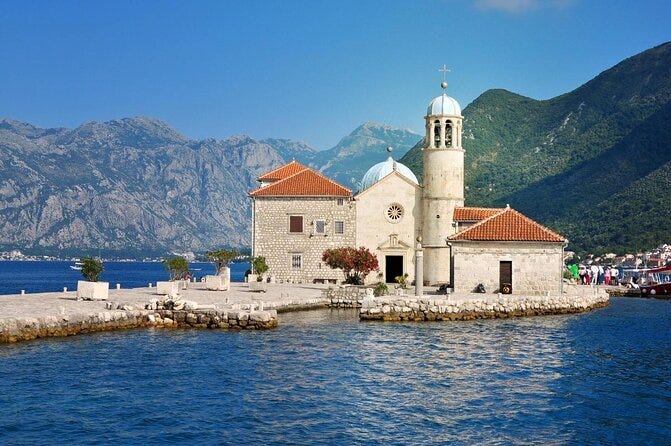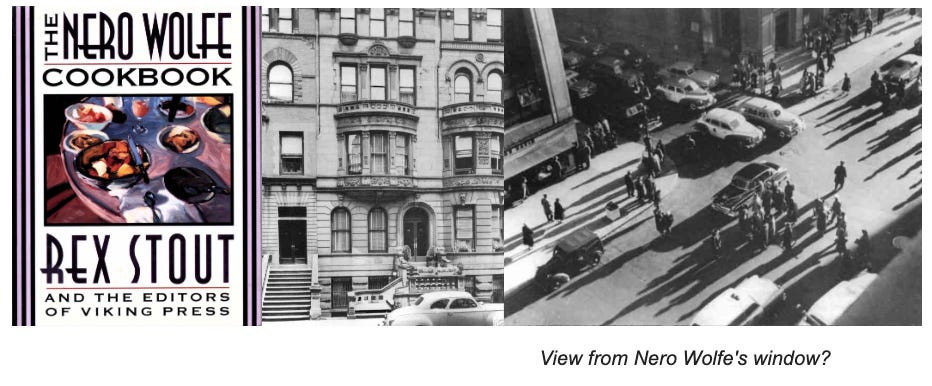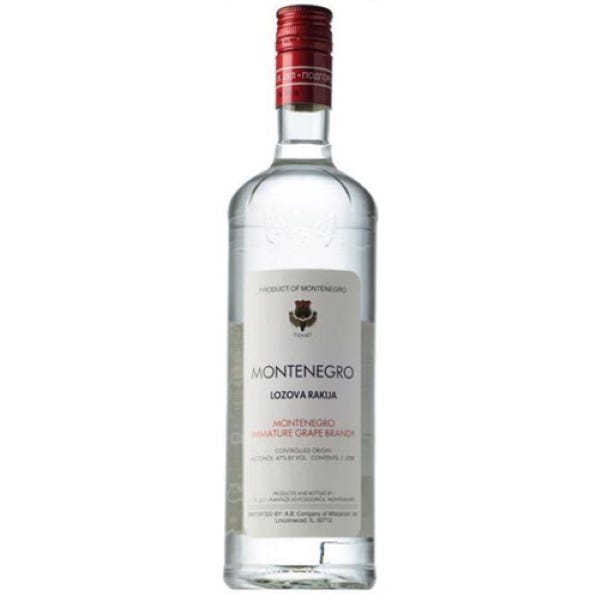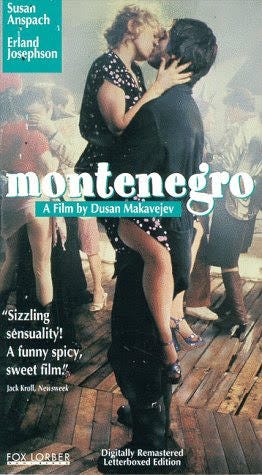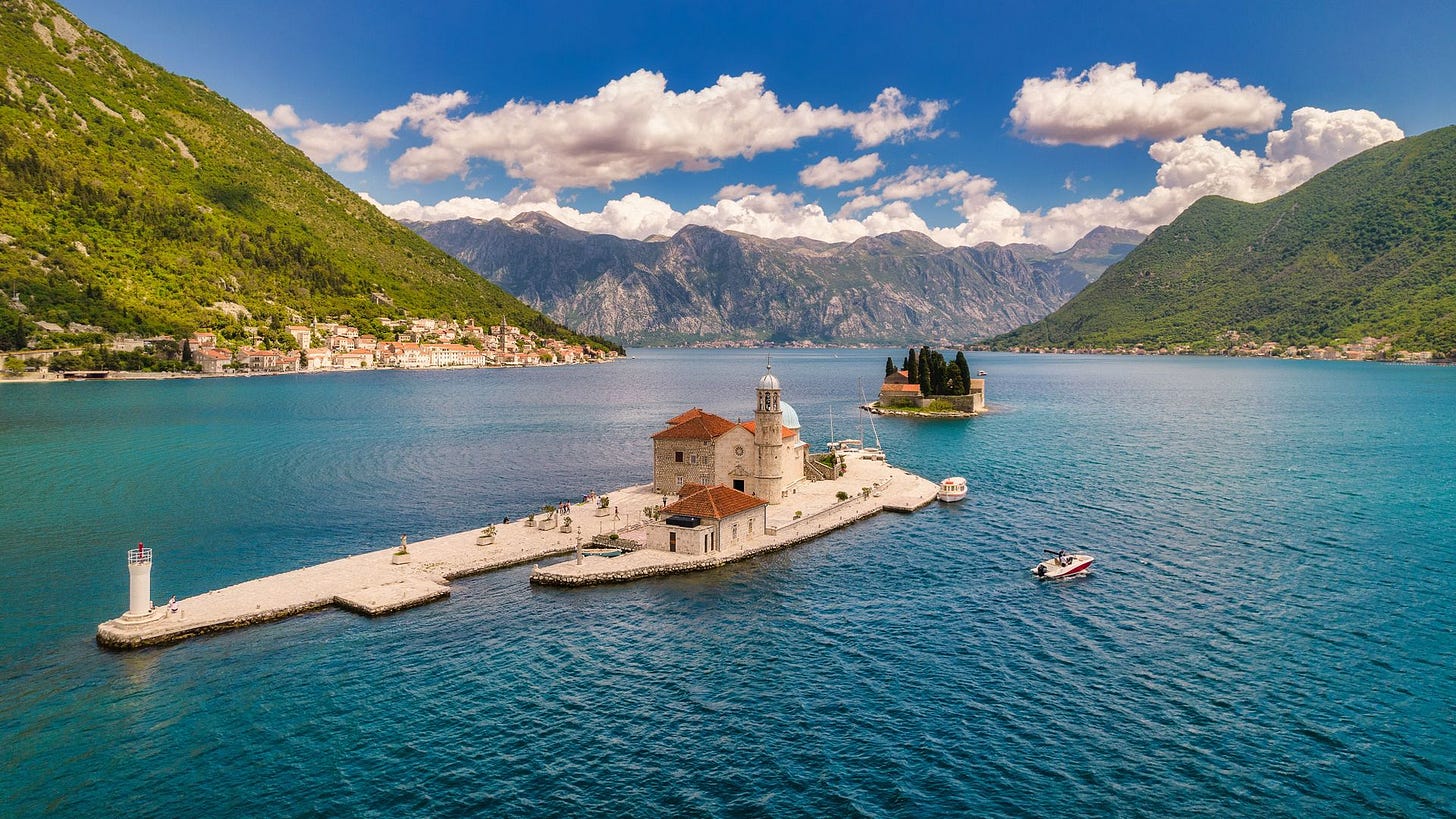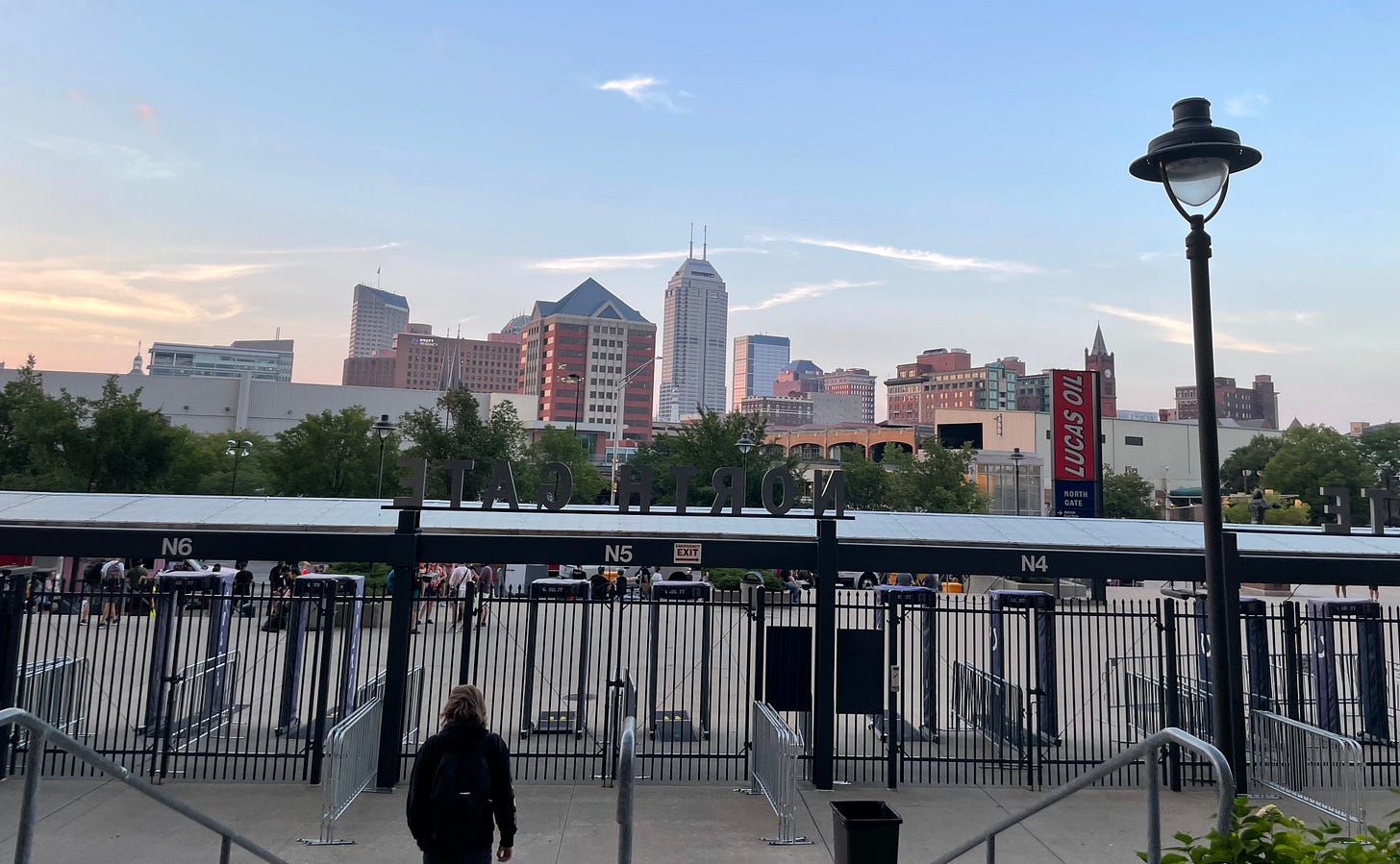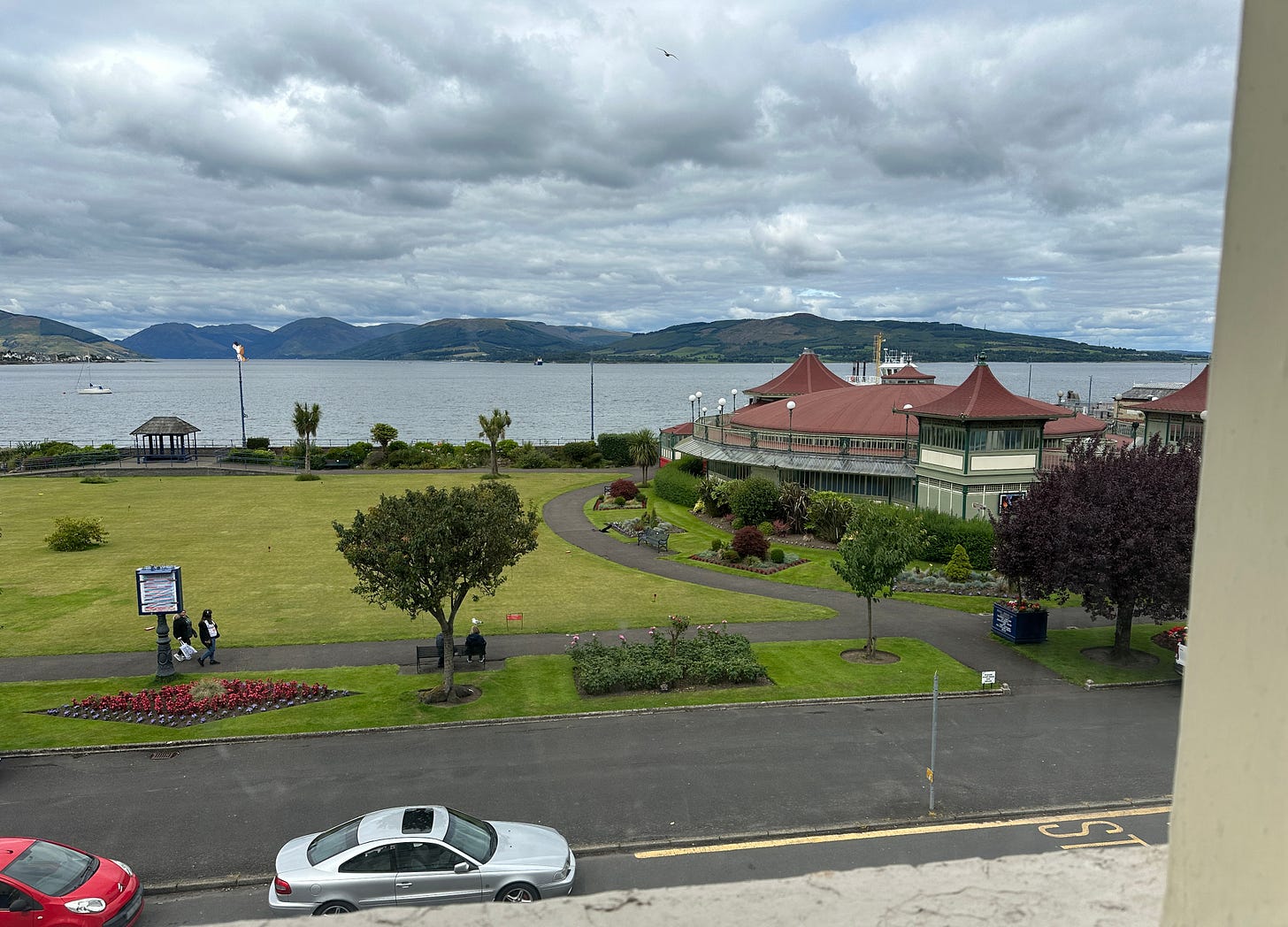VFYW: A Ghost Of A Country
For contest #387, we travel to a place of timeless beauty but shifting borders.
(For the View From Your Window contest, the results below exceed the content limit for Substack’s email service, so to ensure that you see the full results, click the headline above.)
Before we discover where the above photo was taken — and read the weekly VFYW columnists on the local history, food, booze, animals, film, music and more — the winner from last week follows up:
Hi Chris! I was really honoured that my shot was featured for the contest. I even learned a lot myself, especially about the lightbulbs I had just taken for granted biking the streets of Copenhagen for years! I did have a feeling that a lot of readers would get this view, but I had no idea that people would use the lightbulbs as a way of determining the location, or even the country. But it was really gratifying to read everyone who had spent some time here and enjoyed it.
And yes, Kaj Anker is a wonderful painter and an extremely kind man as well. I bet he’s happy to have been featured.
I especially was heartened by one of your readers to mention the rescue of the Danish Jews in 1943. At Yad Vashem, they have a replica of one of the original fishing boats used to sail people across the sound. It never fails to bring me to tears when this is mentioned.
One of your readers commented about the sign on the front of the building towards Amagerfælledvej and said it was hard to read, so I just wanted to clear that up. It basically reads (roughly translated): “Danish State Officials Community housing for widowers. Erected by Danish State Officials 1928.” At the time, there was no welfare state, so when a woman became a widow, she would be left destitute and this building (Amagerfælledvej 18-36) gave her a place to live. It is not used solely for that purpose any longer (I’m not a widower), but one does have to be employed by the state to get in — which of course in Denmark nowadays, that encompasses a LOT of people.
Today, by chance, about 65 percent of the people who live in this building are either active or mostly retired ministers. As a consequence, the building is colloquially referred to as “The New Jerusalem.” In the centre is a garden, and here’s what it look like on Christmas a few years ago:
Keep up the great work! I don’t know how you get on top of all that email, and I just added to that again, but it is certainly impressive to have built such a community. I was very happy to contribute and will again at some point!
Here’s a quick followup from the winner two weeks ago:
The VFYW book would be perfect; we’ll take that as our prize, rather than the two free years of Dish. Cuddly Hubby and I have reached the harvest in life where supporting the Dish, and other things we enjoy, is something we can do. We’re delighted that you and Andrew returned in 2020. When he shut down the Daily Dish in 2015, I said, “Doesn’t Andrew know we love him? He could write just once a week. We would still read. That would be fine.”
And this time he’s added the podcast to the mix, and the VFYW contest is far more evolved and robust than it was in the blog days. The contest is normally behind the paywall, but this week we’ve sent out the whole thing to all our weekly readers. If you’re one of them and enjoy all the amazing contributions from the VFYW sleuths, consider getting a paid Dish subscription, which also includes the entire podcast every week:
Looking to this week’s contest, the super-sleuth in Warrensburg exclaims, “I have to say, this was one of the most stunning views we’ve ever had, perfectly framed by the submitter!” But another sleuth gets an eerie feeling:
I’ve wondered what kind of architecture a machine dreams about.
Earlier in my architectural career, we used to hire renderers who would paint watercolor images of our designs. Even though they were not photorealistic, they conveyed a clear sense of the look and feel of the spaces. The watercolors were beautiful and real works of art produced by true craftsmen. About 20 years ago, things changed. With the advent of 3D graphic software, photorealistic renderings became possible. Nothing was left to the imagination. We could never quite get the details to look right, though, since you had to render them too, which nobody ever did before. Those renderings usually felt a little flat because the people never looked real and it was hard to make them looked lived-in.
These days, with super powerful programs, libraries of images, and rendering farms, even architects coming out of school have the ability to draw pretty convincing photorealistic renderings. Clients love them because they know exactly what they going to get. Plus, honestly, they are pretty nifty. You can even do fly-throughs in and around a building.
So I’m surmising this week’s view was somehow generated using Artificial Intelligence. But to me it feels like the earlier generation of 3D renderings. It’s cool but there are some rookie mistakes. For starters, the shadows of the three columns should all be in the same direction, not splayed. Same for the shadow of the tree across the street, which is at a different angle altogether.
Then there is the glass guard rail. It is way too long to not be broken into segments (like the railing on the terrace across the street.) In whichever exotic location this is supposed to be, it would be very hard to source a piece of glass this large and heavy, let alone hoist it into place past the columns. And sorry to nitpick, but there would need to be a metal shoe at the stone floor to hold and support the glass.
Lastly, like the earliest 3D renderings, the place just doesn’t look lived in, at all. There are no people or furniture, and fewer signs of life than in a Chinese Ghost City:
The reflection of the pillow in the glass is a nice touch, though.
It’s a real place — though I’m not surprised by that sleuth’s take, since the view almost looks too perfect. Update from that sleuth:
I’ve spent the last hour researching shadow patterns made by the sun. Viewed from above, the shadows made by upright columns would be parallel, but since the camera is at eye level directly behind the central column, the shadows appear to converge to a vanishing point due to the optical illusion caused by perspective. Rookie mistake on my part. (But I’d still like to see how the glass rail is supported before I leaned against it.)
This next sleuth is an arboreal expert:
Despite my total failure of a debut last week, confusing the Abacos with an atoll, I’m still in the game. I’m a tree person by trade/hobby, so — after my first question, which is always “Is this the United States?” — I look at the trees. And there were so many trees this week! Palm trees and southern magnolias and tall-and-skinny Italian cypress and a lot of crimes-against-nature topiaries — none of which really narrows things down too much.
But lurking in the far-left side of the photo are what appears to be two Monterey cypress, native to a tiny area of central coastal California:
They are planted more widely of course, but are more common in northern CA than southern. So extreme wealth + Monterey cypress + mountains behind water = the southern part of the San Francisco Bay. Hopefully this time I wasn’t on the wrong side of the planet.
Wrong side. Another gets to the right one:
Mountains, lake, funky cobblestones. My guess is Zug, Switzerland — a shot in the dark, since I have no idea how to even begin to verify. The people who can pinpoint a window are amazing. I’m not even sure my guess is on the right side of the world.
Another one dances around the globe:
The distant skyline looks about right — the architecture, design, etc. on view seems compatible. It’s not Akron, Albuquerque, or Tokyo. It’s not Montreal, Mumbai, or Adelaide. It’s not Helsinki, Havana, or Montevideo. It’s not Singapore, Sebastopol, or Djibouti. Certainly not Lagos, La Paz, or Tegucigalpa.
So, I’m going with Naples. Ciao!
Another sleuth goes next door:
Salût, Chris. It looks like Greece to me. Could be some other Balkan place, or Turkey, but I’m feeling Greece. And it’s deadline Wednesday. Paralia?
Another guess for Greece comes from the super-sleuth in Yarrow Point:
For the two previous weeks I was so far off in my searching that I almost skipped this week in disgust, but I’m nothing if not stubborn. I’m taking a quick stab at this week’s contest, though I couldn’t find an exact window picture because of the absence of Google Map street view. My guess is the Margo Beach Hotel near Gytheio on the southern tip of the Peloponnese in Greece.
The Peloponnese is about the size of Massachusetts. It is technically an island, cut off by the Corinth canal — a four-mile long, 70-foot wide canal built in 1893 to give easier, quicker access to Athens. It is mostly a tourist attraction now, because its narrow width isn’t passable by most modern ships, and its steep walls are plague by erosion and landslides:
Twenty-five-hundred years ago, Gytheio served as the port for Sparta. Yes, this is where the best known ancient tale of romance occurred; Homer’s Iliad names it as the spot where Queen Helen of Sparta and her abductor, Paris of Troy, spent their first night fleeing Helen’s husband, the King of Sparta. Helen was, of course, “the face that launched a thousand ships,” and those ships departed from the port at Gytheio.
The Peloponnese thrived during Roman times, but was devastated by a massive earthquake in the early Third Century BCE. The earthquake and subsequent tsunami wiped out most of the coastal towns, and was considered a punishment by the god Poseidon because of a “serious crime committed in his shrine.” The serious crime is never named.
Anyone familiar with Greek mythology knows that Poseidon is a bit of a douche-canoe prone to fits of uncontrollable anger. In the Iliad, Homer describes Poseidon as a god even Hades was afraid of: “Hades, lord of the dead, cringed and sprang from his throne and screamed shrill, fearing the god who rocks the ground above his realm, Giant Poseidon, would burst the earth wide open and lay bare to mortal men and immortal gods the houses of the dead, the dank, moldering horrors.”
Another goes with simply “Pafos, Cyprus.” Chini knows the right spot:
The grand champ also sends this gorgeous view:
The UWS super-sleuth from NYC remarks on “what appears to be the diabolical nature of this view”:
As someone who has been to Italy 40 times, I was feeling the Italian-ness of this view from the very first moment I saw it. But then I zoomed in on the Dusty icon only to spot what I believe is the word “Entrance.” What?! At which point I pivoted to California ... and then dropped the ball during a very hectic weekend and last few days. I’m really looking forward to the answer to this one — and all the stories, etc. Thanks, and enjoy the rest of your summer!
This next sleuth also focuses on the sign:
A key clue is the sign above the entrance to the parking garage, which appears to say:
EXIT / [beagle] ENTRANCE / letter letter A Z?
Trying all the Western languages supported by Google Translate, “ENTRANCE” translates to “ULAZ” in Croatian and Bosnian. Wikipedia says, “Montenegrin is the official language of Montenegro, though it is mainly the same language as Serbian, Croatian and Bosnian.”
From a previous winner in Ithaca:
Croatia! That’s all I got. And I’m disciplining myself to send in the entry now just for fun, rather than imagining I’m going to find any more time to spend on it! The country was easy (if indeed I got it right) thanks to the aptly named website indifferentlanguages.com, which allowed me to scan, well, different languages for words meaning “entrance” that would fit the blurry text on the parking garage:
“Ulaz” — bingo: Croatian. And Croatia fits the climate, and the fact of a very new luxury gated-community-looking resort. But there are too many such resorts for this sleuth this week! Why don’t I say Split, just because it’s a memorable name.
“Ulaz” was also one of two key clues for the weekly sleuth trio in Vancouver, WA, and here’s the other:
Wow, we were about to give up. Two clues led us to to the right place, though. First, a uniquely shaped fire hydrant:
That seemed to lead nowhere, as this style is found many places. So, we went to Croatia and found it to, sure enough, also have all similar looking fire hydrants … except:
They are always BLUE! Our clue shows a red one, but everywhere I look in Croatia they are blue. They are everywhere! Must be a very safe place to live, but less likely to be the correct place otherwise the clue would have had a blue fire plug.
Bosnia is landlocked, and we see a large body of water that appears to be coastal, but south of Croatia is Montenegro. Let’s go looking around Montenegro, maybe these kind of fire hydrants are also there but red like our clue? After spending so much time “driving around” in Google Streetview, I said out loud that I’m convinced there are NO fire hydrants ANYWHERE in Montenegro. Seems to me this makes it quite a hazardous place to live?
I might have given up except for a Streetview image that gave me an emotional boost to tell my team that my gut is still screaming MONTENEGRO!
Montenegro it is. The super-champ in Rome adds:
For some reason, I thought Montenegrin was written in the Cyrillic alphabet, so I went right for Croatia. But almost the opposite is true: as Wikipedia says, “Although the Latin and Cyrillic alphabets enjoy equal status under the Constitution of Montenegro, the government and proponents of the Montenegrin language prefer to use the Latin script; it is also much more widely used in all aspects of the day-to-day written communication in the country, in education, advertising and media.”
The DC super-sleuth points to the right town:
The name of the town is revealed by the super-sleuth in Ann Arbor:
So many layers in this picture: the first impression is very much Mediterranean, with umbrella pines and cypresses, and yellow buildings with green shutters and tiled roofs. Not to mention the columns in the foreground.
But then, something is off. This isn’t really Italian architecture. It is Italian the same way Vail, Colorado (contest #291) is Tyrolean. And the telltale downspouts look very American.
So is this California? No such dramatic mountains on the ocean, as far as I can tell. Moreover, the settlement pattern on the hillside does not look American. So maybe we need to look in Europe after all, in a place where Italy is an influence, with dramatic landscape, and potential to attract lots of well-paying American tourists?
There is really only one place in the Mediterranean that would fit: the eastern coast of the Adriatic, from Croatia to Bosnia to Montenegro. We could confirm this when we looked up the word for entrance in Croatian: yes, it says “ulaz” over the entrance to the parking garage. But the hills of Dalmatia are mostly barren, the greener parts are further south, as we saw in the view from Korčula a while ago. That ultimately takes us to Herceg Novi — or rather, a nearby village: Kumbor.
Herceg Novi sits at the entrance to a labyrinth of bays and passages. Further inland is the older city of Kotor, and the merchant republic of Dubrovnik is not far up the coast. Here is the area as depicted in the sailing atlas for the Mediterranean by the Ottoman admiral Piri Reis, written in 1526:
I got this map from a 17th-c. manuscript in the Walters Art Museum in Baltimore, one of the prettiest works in the entire history of mapmaking. Interestingly, the map shows it as Castelnuovo, with its Italian name. A few thoughts about the place:
Although the name of the city seems to point to Hercegovina, the area today belongs to Montenegro. Hercegovina derives from the German title herzog, i.e. duke, while Montenegro is the Italian word for Black Mountain, Crna Gora. That is already an indication how complicated this place is. There has never been a clear definition of what territory should belong to Montenegro. The language Montenegrin is a standardized version of South Slavic, formerly known as Serbo-Croatian, today split into national languages, alongside Croatian, Serbian, and Bosnian.
Herceg Novi was founded by Tvrtko, a king of Bosnia, when Genoa and Venice fought for control of Dalmatia. It was ruled by the Ottomans for two centuries, later incorporated into Venetian Albania, annexed by Habsburg Austria, ceded to Russia, then to France under Napoleon, then briefly part of Montenegro, and then became Austrian again, until 1918. In the 20th century it was part of independent Montenegro, then of the kingdom of Serbs, Croats, and Slovenes that became Yugoslavia. Annexed by Italy in 1941, and recaptured by Tito’s forces, to become part of the People’s Republic of Montenegro, within Yugoslavia, and remained with Montenegro when Yugoslavia fell apart.
So what does it mean to be Montenegrin? There is no better place to show us not only the violent outcomes, but the sheer absurdity of national identity as a natural given, than the Balkans.
While we’re talking history, here’s the super-sleuth in Warrensburg with his weekly lesson:
As an historian of communism, my first thought when I discovered the location was: did Tito ever go there? And oh man, did he ever.
As is well known, Josip Broz (aka Tito) was a Croatian communist who made his name as an anti-fascist, fighting to liberate his country from Axis control in World War II. At war’s end he parlayed his partisan heroics into political control, forging a communist dictatorship that he dominated until his death in 1980.
Being the leader had its perks, of course, and Tito knew how to have a good time — just ask Sophia Loren!
And this brings us back to our view this week. As a reward for a life spent championing for the proletariat, Tito built some three dozen vacation houses across Yugoslavia, including one in the Herceg Novi suburb of Igalo:
With the government footing the bill, Tito commissioned this house, dubbed “Villa Galeb” (seagull) in 1975, with construction completed in less than a year. During the last years of his life Tito spent months each year at the Montenegrin villa, soaking up the sun and conducting the business of state. Here’s how the house looks today:
Just as Karl Marx would have wanted!
Another interesting feature is a custom fish tank, apparently designed to test the quality of the water and thus detect any poison before it got to Tito; and what would a Cold War mansion be without a bomb shelter?
Here’s another detailed solution, from the Berkeley super-champ, who names the right building:
Arboreal clues suggested this was somewhere on the north shore of the Mediterranean Sea. Architectural style, the pristine condition of buildings and roadway, with everything built atop a surface-level parking garage — it all suggested this was a newish resort designed as some kind of idealized pastiche of an authentic village. (Sort of the way two years ago that ski resort in Vail fooled people into thinking we were in Bavaria because it had a maypole. And by the way, where is everybody? This place is deserted! Is it the off season? Is the resort not yet open for business? Is everyone off at dinner?)
Since nothing in the foreground seemed to present a useful search term, this view was going to require identifying the background mountains. But promising search terms for that weren’t forthcoming either. So this week turned out to be a process of elimination. Having already decided we were probably somewhere between Ventimiglia, in westernmost Italy and Alexandroupoli in easternmost Greece, I asked “Where hasn’t the VFYW been lately?”
Well, just this past March, we were in Umbria and the suburbs of Athens. In January and March of last year we were in Florence and just outside Rome. Hell, since the VFYW’s reboot three years ago, we’ve been somewhere on the Boot five times and in Greece once (but that was pretty recently). But we haven’t had a whiff of the eastern shore of the Adriatic since we looked in on the would-be birthplace of Marco Polo almost two years ago. Add to that my having anticipated a view photo from Kotor ever since the VFYW reboot and you can see why I went like a shot straight to the Bay of Kotor. (I learned about it several years ago when the woman who cuts my hair insisted, that for my next trip to Europe, Kotor needed to be on the itinerary.)
So this wasn’t the first time I’ve tootled around in the Bay of Kotor, using Google Earth, in response to seeing terra cotta roofs, palm trees, and Mediterranean cypresses in a VFYW photo. But this time, in almost no time, I got my Eureka moment when I saw a photo that had a perfect match in it for the mountain range in our background — perfect in every aspect, right down to the foothills, and the angle from which the photo was taken:
The photo was labeled Portonovi, Montenegro, which turned out not to be a city or village but a resort, and it only puffed up my sense of self-satisfaction by confirming those earlier assumptions I’d made about the place. It’s on 64 acres along the shores of Boka Bay in the municipality of Herceg Novi (founded in 1382). The resort has 218 residences (including 50 rental properties), of which a one bedroom can be had for close to a half-million euros — though the really nice places will run you something like 20 times that! Its marina has 238 berths for yachts up to 120 meters long, so don’t worry, your boat will fit.
We’re not in that resort, though. We’re next door in One&Only Portonovi, which opened to its first guests in 2021. It’s a high-end, 60-acre resort with 113 rooms and villas, multiple pools, a private beach, and all the amenities you could want. We’re on the top floor of the tallest building on the eastern edge of One&Only looking eastward over the other resort and toward the mountain that gave Montenegro its name.
By the way, the 5,738-foot-tall mountain, which dominates the range in the background of our view, is named Lovćen. It has two peaks: Štirovnik (the taller) and Jezerski. None of those names remotely conjure Montenegro, yet the mountain gave the country its name. As I understand it, the people of Montenegro call their country Črna Gora, while the rest of the Western world gets away with using the name given to it by its Venetian conquerors who, starting in the early 15th century, dominated at least the coastal areas of Montenegro for almost 380 years. They were impressed enough with the mountain, which was visible from out at sea and appeared black to them because of its thick covering of evergreen forests, that they called it the “black mountain.” And somehow that term, which is the meaning of both Montenegro and Črna Gora, became a synecdoche for the country.
The globetrotting Alaskan writes, “I didn’t get much of a hit in a few quick searches, so I kicked it over to Valya, who did her mountain matching magic, and she eventually found the resort — the most modern-looking place in the area.” A previous winner has the address:
This week’s photo was taken from the One&Only Portonovi Resort, with the address at Herceg Novi 85340, Montenegro. The guest is facing the town, the unseen marina, and the mountain beyond.
A few more details for One&Only come from the SF super-sleuth:
The construction looks too new to be Italy, and on approximately the same latitude the steep shorelines of the Bay of Kotor come into view. The One&Only Portonovi opened in May 2021 — new construction, indeed! Thanks for the lovely reminder that Montenegro (and the rest of the eastern side of the Adriatic) needs to remain high on the list of places to visit … whenever my wife and I can ditch the kids for a few days!
The CO/NJ super-sleuth zooms in:
Although One&Only kind of looks like a Communist-era office building, this place is quite swank. Unknown to me before this week’s contest, Montenegro is a popular playground for the rich and famous, and the resort of Portonovi appears to be expressly created to cater to that crowd — with a marina, lots of high-end real estate for sale and the very exclusive hotel from where our photo was snapped.
As to the right window, the submitter of this week’s photo only offered the following details: “Room 502, One&Only Portonovi, Herceg Novi, 85340, Montenegro.”
Twenty-one sleuths got to Herceg Novi and/or the more specific village of Kumbor. Only two of them haven’t won the contest already. One has two entries overall, and the new one reads: “I don’t have a thing about Montenegro, other than to say I’d like to visit some day, as that stretch of coastline looks spectacular.” The winner has three entries overall, and he writes this week:
I learnt my lesson from last week’s Copenhagen effort — be better at drawing circles!
I’m still working on how to exactly triangulate which room these photos are taken from, but am even more stoked that I’m finally getting some right after years of wondering how the heck anyone does it. It looked European and palms mean south, then some time on Google translate for entrance in various languages to get something approximating the blurred car park image. Yep, that could say “Ulaz”. English first hints at hotel, from there it is all a bit of a blur.
What a spectacular hotel and area. If nothing else (I’m not expecting to win the prize any time soon) this contest keeps adding to the “places to visit one day” — though this one might go in the “if we win the lottery” section of that list! It’s taken from a room at the back of the One & Only resort in Portonovi. It looks stunning.
“The entire area is breathtaking,” says the super-sleuth in Clinton, CT, “so here’s the window from several thousand feet”:
Here’s the CO/NJ sleuth again:
Здраво, Chris! Here are 5 fun facts about the area:
Although it seems quite obvious to me now, I had not put two and two together to realize that Montenegro means, literally, Black Mountain. This name is derived from that double peak that we can see on the right side of our view this week, Mount Lovćen. The mountain and surrounding area comprises a small national park featuring significant historical, cultural and architectural treasures:
Montenegro was the first country to come to Serbia’s aid at the outbreak of WWI. The first action took place on Mount Lovćen, from where a battery of Montenegrin and French guns attempted, and failed, to capture the Austro-Hungarian naval base in the town of Kotor at the foot of the mountain. Instead, the Austro-Hungarian empire launched a counter-offensive, bombarding the mountain, and breaking the morale of the Montenegrins, who sued for an armistice two days later.
Also on Mount Lovćen is the mausoleum and final resting place of Petar Petrović Njegoš, commonly referred to simply as Njegoš. He was a Prince-Bishop of Montenegro, poet and philosopher and his works are widely considered some of the most important in Montenegrin and Serbian literature:
The Bay of Kotor, where our resort sits, is Europe’s southernmost fjord and is one of the deepest natural harbors on the continent. This entire region, including the bay and the town of Kotor, is protected as a UNESCO World Heritage region.
And the #1 fun fact this week:
Just to the northeast of the resort, in the northern part of the bay is a Catholic church on a small island, Our Lady of the Rocks. The legend is a fisherman discovered an icon of the Virgin Mary on a rock three times in a row so he took it as a sign to build a church at the very location. Behind the alter, inside the church, there’s a small hole that provides access for visitors to reach out and touch this rock. The island was created by bulwarks of rocks and by sinking old and seized ships loaded with rocks. Over the years, people sailing past would drop more rocks and stones into the sea to further expand the island, a tradition that continues to the present day:
From the super-chef with his weekly food report:
Much of Montenegrin cuisine is local versions of dishes that can be found throughout the Balkans and Turkey: stuffed grape leaves (sarma), musaka, filo dough cheese pie (gibanica), and various forms of kebab.
One dish that seems specific to Montenegro is rastan, a stew of stinging nettles or collard green, onions, carrots, potatoes, and pork belly or sausage. A usually unreliable source (the internet) says it is delicious, but I decided to keep looking. I liked the Milwaukee biologist’s idea of making a literary connection, and my wife reminded me that Nero Wolfe — the orotund genius detective created by Rex Stout — came from Montenegro. Like me, Wolfe was a foodie sleuth. He lived in a New York brownstone on 35th St like the one below, with his sidekick, Archie Goodwin, who did all the leg work, and his chef, Fritz Brenner, whose dishes are as carefully described in the books as the murder victims Wolfe investigates. There is even a Nero Wolfe cookbook with recipes for all the dishes:
In The Black Mountain, Wolfe breaks his rule of never leaving the brownstone and travels to Montenegro to avenge the murder of a friend. There he cooks a dish from his childhood:
In the kitchen I found Wolfe concentrated on cuisine, with his shirt sleeves rolled up. We ate at a little table in the kitchen. There was just one item on the menu, dished by him out of a pot. After three mouthfuls, I asked him what it was. A pasta called tagliarini, he said, with anchovies, tomato, garlic, olive oil, salt, and pepper from the cupboard, sweet basil and parsley from the garden, and Romano cheese from a hole in the ground. I wanted to know how he had found the hole in the ground and he said — offhand, as if it were nothing — by his memory of local custom. Actually, he was boiling with pride, and by the time I got up to dish my third helping I was willing to grant him all rights to it.
It sounds more Italian than Montenegrin to me, but Italy is just across the Adriatic and it wouldn’t be surprising to find some Italian influence. And I don’t blame Rex Stout for skipping the rastan, as I did. Instead for dinner this week, we made the tagliarini and another Montenegrin dish, Brav u mlijeku — lamb boiled in milk with potatoes and carrots, seasoned with garlic, fennel, parsley, salt, and pepper. It doesn't look particularly appetizing — I always forget Kenji's advice to add some gratuitous parsley for the photo — but it was quite delicious:
The VFYW mixologist’s latest creation, The Great Dane, was particularly fine. I had some Norwegian Linie Aquavit, so-called because it goes on a long sea journey in oloroso sherry casks, crossing the equator (the line) twice, with a delightfully nonsensical story about gaining its flavor from the fluctuation in temperature and the constant rolling. It had a distinctive caraway note that added to the complexity of the cocktail.
Speaking of cocktails, here’s our resident mixologist:
This is the first contest from Montenegro, though I have searched this area many times for the other contests in this area of the Mediterranean — Dubrovnik from the previous incarnation of the Dish, and Korčula more recently (both in Croatia). It’s a very interesting area that I hope to explore someday. I look forward to the great contributions from the amazing array of sleuths that participate in this community.
So what do they drink in Montenegro? Another week, another great regional spirit to learn about. This week, I discovered Rakija, informally the national drink of Montenegro — a kind of grape brandy that is a variation of a spirit that goes by Rakia, Rachia, Raki or Rakija depending on where in the Balkans you find yourself. Rakija is produced from fermented and distilled fruit, typically plums or grapes, but sometimes other fruits like peaches, figs, apples, blackberries and quince.
The type consumed in Montenegro is primarily made from immature Vranac and Kratoshija grapes. It combines the skins, juice and even some of the stems of young grapes. In typical Mediterranean fashion, it’s drunk from small glasses straight, sometimes with a little ice. It’s not easy to find, but I did locate a Delaware liquor store that would ship me a bottle, that arrived this afternoon, just in time for me to fashion a cocktail.
Rajika has a very interesting, delicate flavor. It’s strong (94 proof), but very smooth. It’s most similar to vodka, but has a subtle wine-like flavor, like a very dry Pinot Grigio. I first tried a Rakija martini with a little vermouth and some rosemary as a garnish. Rosemary is common in the Mediterranean, and according the Interwebs is everywhere along the coast in Montenegro. The martini was “OK” but nothing special, so I decided I needed to make it a little more interesting.
This week I came up with what I’m calling the “White Mountain” — a play on the name Montenegro, which means “Black Mountain,” and the hazy mountains in the view look a bit pale. Since Rakija is colorless, the resulting shaken cocktail ended up a pleasing white color:
Wanting to keep the rosemary as part of the concept, I made a rosemary simple syrup: boil 100ml of water and add 100ml of granulated sugar and stir until the sugar is dissolved; reduce heat and add 2 sprigs of fresh rosemary; simmer for five minutes, stirring frequently. Let cool. Other than the Rakija, the only other ingredient is lemon juice.
Here’s the recipe for the White Mountain:
Add some ice to a cocktail shaker
Add 1 oz of rosemary simple syrup
Add 1 oz of lemon juice (1 lemon)
Add 2 oz of Rakija (You can substitute a London dry gin, but it won’t be quite the same)
Shake vigorously and strain into a chilled martini glass
Garnish with a sprig of rosemary
Sip and enjoy a majestic view of the mountains and ocean
The White Mountain is really, really good. The rosemary gives it a savory element that blends perfectly with the Rakija, lemon and sugar. One of my favorites so far.
As a side note, I really enjoy hearing from readers who have replicated the cocktails I’ve been creating. It’s good to hear the good and the bad (Valentini, anyone?).
As a second side note, It would be really cool for the Dish to publish a combination cookbook/cocktail book with recipes from the super-chef and cocktails from yours truly, of course with the accompanying contest view.
I’ve definitely had the same thought, along with a photo book for all the amazing postcards that A. Dishhead has created over the years. But the Dish staff (i.e. me) has only so much bandwidth for hefty side-projects like that. (The VFYW alone can take up to 15 hours to compile every week.) But perhaps an intrepid sleuth out there might be interested in helping with a project via Blurb — the print-on-demand platform we used to publish the VFYW book and The Cannabis Closet years ago. And if we sell it for a small profit (which we didn’t do for the other books, to keep the price as low as possible), perhaps the sleuth could split it with the mixologist, chef and/or postcard-maker.
Next up, the ski-nerd sleuth:
The resort is on the Bay of Kotor, and further inland is the port of Kotor, dating back to ancient Roman times. We visited Kotor’s old town in 2010 on a day trip from Dubrovnik:
The nearest skiing is 53 miles away at Savin Kuk Ski Centre, in the Durmitor National Park. With two double chairs and a vertical drop of 2300', it looks like a small, beautiful ski area that would be fun for a couple of days:
Here’s the weekly fauna report from the Milwaukee biologist:
I have to admit, this resort looks deadly to me from a biology POV — all that pavement and those antiseptic shrubberies. It’s impossible for me to believe that this is one of the wettest places on earth!
Kotor is known for its cats, but what I found on the internet was confusing. Were the cats loved and cared for, or were they miserable strays? Were they appreciated as vermin killers, or because their cries warned citizens of a coming earthquake — or were they strategically poisoned in the off season? The only thing that seemed certain was the existence of the cat museum and of an effective trap-neuter-release organization founded in 2018.
What about wild animals? Montenegro’s mountain forests have a wide variety of European animals. Among them is the Capercaillie, the world’s largest (and most forceful) grouse:
But I got most interested in their snakes when I found that Montenegro had the Aesculapian snake, the species referenced in symbols for doctors and pharmacists:
This snake can grow up to seven feet long and is still celebrated in Cocullo, Italy:
Fortunately for Montenegro hikers, the Aesculapian is a shy, non-venomous snake that spends much of its time up in the trees. By contrast, Montenegro’s rocky hillsides host the most venomous European viper, the Horned Viper. I didn’t find any record of bites in Montenegro, so apparently this snake, like most, avoids people:
The one that intrigued me most was the slow worm, which is actually not a snake at all but a legless lizard. You can see some differences in the head; slow worms have eyelids, stumpier tongues, and more of a velociraptor expression:
Otherwise, they look just like snakes. Convergent evolution FTW!
I read a Reddit comment from someone who loves to visit Montenegro just for the snakes. Hope the photographer had as much fun!
Here’s the weekly music report from the Indy super-sleuth:
Rambo Amadeus is the most famous Montenegrin singer, according to this site. You might have guessed that Rambo Amadeus is not his real name — it’s Antonije Pušić. His most popular song on Spotify is “Glupi hit”:
Glupi means “dumb” or “stupid.” A good description came from the previously referenced site: “His concerts are never mere repetitions of recorded songs, but a mixture of free improvisation and satirical humor exploiting all aspects of human nature in a crude manner. Some fans compare his style with Frank Zappa and Captain Beefheart.”
In 1988, he released his debut album O tugo jesenja. His sound is an odd combo of folk and opera, mixed in with humorous lyrics and classic guitar. Since very few people had heard of him, Rambo Amadeus decided it would be fun to introduce himself as Nagib Fazlić Nagon, a mine-shaft operator who saved up enough money to record an album. He also jokingly referred to his own musical style as turbo folk.
His next album, Hoćemo gusle, was released in 1989, and it was his foray into political satire. The album title pokes fun at an event from the 1989 protests in Montenegro. Protesters were heard chanting “Hoćemo Ruse” (“We want the Russians”), but when the authorities and state-controlled media criticized them for it, the protestors claimed they actually chanted “Hoćemo gusle” (“We want gusle”). I had to look up gusle — it’s a single-stringed musical instrument traditionally used in the Balkans. “Glupi hit” is from this album, along with another hit “Balkan boj”:
His third album, Psihološko propagandni komplet M-91, came out towards the end of 1991 at a time when the breakup of the former Yugoslavia was happening. Many songs contained dark lyrics and profanity. This album was the first major music release in former Yugoslavia to use this kind of language.
During the “Belgrade spring” festival in 1992, Rambo Amadeus interrupted a concert by another performer and said to tens of thousands: “As we play here, bombs are falling on Dubrovnik and Tuzla. We won’t entertain the political voters no more. Fuck your mothers!” He threw the microphone on the floor, left the stage and the show was over.
The cinema report from Berkeley:
Unlike last week, where the cinematic pickings were particularly rich, even dear to some of us, this week things were a little thin on the ground, at least as far as movies actually filmed here (as opposed to ones that dart in for a quick shot and then leave, or something set here but not filmed here). For some reason, regardless of how beautiful Montenegro is, especially in the vicinity of the Bay of Kotor, the cinematic pickings this week have been sparse. It’s as if most of the few film companies that visit the area come in, film a scene or two, then scamper away.
One notable exception was something called The Dark Side of the Sun (1988). It was filmed almost entirely in and around Kotor back when Montenegro was part of Yugoslavia, just before its dissolution. It’s about a young man who has an extremely rare skin disease. He’ll die if he’s exposed to sunlight for more than a day or two, and his wealthy parents have dragged him around the world seeking a cure.
For most of the movie, to keep out the sun, the young man wears a skintight leather bodysuit. It doesn’t look strange when he’s riding his motorcycle, but when he removes his helmet and reveals what’s essentially a gimp mask underneath, well I can only hope the producers hadn’t anticipated how kinky it would look. It’s not until the 35:37 mark that the gimp mask gets gently peeled away to reveal the face of a 24-year-old Brad Pitt. I’m sure if my wife were to look in on that scene, her heart would skip a beat.
But the reveal isn’t worth watching the whole movie for. It’s seriously ONLY for Brad Pitt completists and even they should see everything else he’s ever done first (including that single episode of 21 Jump Street), before turning to this movie. Then they should decide to skip it anyway. This movie never got a theatrical release, and it only got a direct-to-video release nine years after it was made, after Pitt had become a star.
This is a link to the whole movie, but you’ve been warned:
Another exception to the rule is something called Killer Mermaid (2014). The subject matter had me reflecting on our dalliance with Copenhagen and its famous statue last week. I lamented that this movie wasn’t filmed there. By a good director. With a good cast. And a good script. But Killer Mermaid, AKA Nymph, AKA Mamula is another straight-to-video extravaganza.
Its opening scene is said to have been filmed in the village of Herceg Novi, right around the corner from our resort, but the opening half-minute of the trailer was nearly all filmed across the bay from us in Tivat at a swimming pool named Buddha-Bar Beach. Most of the bloodshed takes place at the mouth of the bay at the abandoned fortress on Mamula Island. I’d had high hopes for the movie as a potential boost to filmmaking in the region, since it was almost entirely filmed here, but the maimed handful of professional reviewers who’ve chimed in have nothing good to say, and audiences hate it. So that’s a shame because surely there’s always room for more schlocky horror if it’s good schlocky horror. From all reports, though, this isn’t that — though the trailer is tantalizing:
Dug Moru (2019- ) is the title of a Serbian TV series that's largely filmed in the Bay of Kotor area. Its title translated into English is Debt to the Sea. It looks as if it’s a super-mysterious thing involving one of those deadly magic legends that allow series producers to milk viewers’ attention week after week. Such shows aren’t really my cup of tea, so I’m not sorry to be unable to watch it, but I really love the trailer to its second season, which I’m sure is improved mightily by my inability to understand a word anyone in it says.
And just in under the wire on Wednesday, I think I still have time to sneak in a quick mention of November Man (2014), a middling actioner starring a 61-year-old Pierce Brosnan as an ex-assassin who needs to prove he’s still got it. The reviews are meh, but the action scenes seem up to par. The urban stuff was mostly shot in Belgrade, but once the movie gets out into the country, it roams all around the region of this week’s VFYW location.
There’s a different trailer that’s more action packed, but it pretty much focuses on the Belgrade scenes. The one below at least gives a nod to our locality. Just over a minute in, there’s at least a microsecond of Brosnan in a Porsche 356 driving through the village of Perast about a half-hour’s drive away from our window. Maybe less than a half hour away if you’re driving the Porsche.
And this clip, in which Brosnan as the senior assassin offers stern advice to a wet-behind-the-ears trainee, was filmed about 20 miles down the coast in Petrovac, at a pier-side table outside Lazaret Café & Pizzeria:
None of the citations above should be interpreted as recommendations, but if you’re hankering for a Montenegro shoot-em-up to pass the time this weekend, November Man just might be your only option.
Another film is highlighted by the super-sleuth in Clinton, CT (who notes, “Brad Pitt was paid a grand total of $1,523 for his seven weeks of work on The Dark Side of the Sun”):
So, as I’m wholly unfamiliar with Montenegro, the best I can offer is this quirky little film from 1981, which I recall from some of the earlier days of the VCR, when, instead of studying for law school, I’d more than occasionally rent small films like this to spend an afternoon or evening with. It’s only immediately recognizable American actor is the late and entirely under-appreciated Susan Anspach. The film is actually set in Sweden and takes its name, not from the country/region, but the character with whom Anspach’s Marilyn Jordan has a raucous erotic affair.
If anyone is interested, the film can be seen in its entirety on YouTube.
Yet more cinema comes from the super-sleuth in Augusta, GA:
I was a bit flummoxed by seeing that the address had it being in Herceg Novi, but it seems that Herceg Novi is also the name of the larger municipality that contains the town. That sort of thing can be tricky, as I recall from contest #324, where it was pointed out that much of Las Vegas is NOT actually Las Vegas. But I consider it a victory so long as I find the place. I haven’t visited Montenegro, but I have been to Dubrovnik, and since my trip was before the break-up of Yugoslavia, I guess I could say I’ve technically, sort-of been to the same country as this week’s View, so long as the person asking didn’t specify a time frame.
As for fun facts and stories, I just recently got around to watching the IFC series Documentary Now!, which spoofs famous documentaries, and my favorite so far is the episode “Waiting for the Artist,” which features Cate Blanchett as “Izabella Barta” — the most famous performance artist in the world. It is, of course, based on Serbian-born artist Marina Abramović, specifically the 2012 documentary Marina Abramovic: The Artist Is Present, which focuses on her 2010 MoMA show of the same name, in which she sat silently in a chair for seven hours a day while members of the public sat opposite her. Here’s the trailer:
And here’s a clip from the IFC show:
It’s a pitch-perfect, loving parody, that references all of Abramović's most famous performances, such as the Rhythm Series and The Lovers. It even has a cameo by Exit Through the Gift Shop “star” Thierry Guetta, who says of the dubious work of artist Dimo, “If it’s not art, then why do people pay millions of dollars for it?"
If the VFYW stops by Belgrade this year, then I fear I have just played my only card, but both of Abramović’s parents were from Montenegro (which didn’t completely separate from Serbia until 2006), and she herself always says in interviews that she isn’t Serbian, but rather from a country that no longer exists, so it’s probably okay to take some artistic license with the locational relevance this time, in case the View doesn’t make it back for a while.
The Berkeley cinephile mentioned Perast, and the CO/NJ guy highlighted Our Lady of the Rocks, so here’s more detail for both, from a previous winner:
The Bay of Kotor, cradled between towering cliffs and the Adriatic Sea, is a place where nature’s grandeur intertwines seamlessly with a tapestry of history. The bay, often likened to Europe’s southernmost fjord, has been a coveted gem for many empires due to its strategic position. Perast, a quaint town by the bay, stands as a testament to the region’s tumultuous past. During the late 17th century, when the Venetian Republic held sway over the area, the town experienced both the glory of naval triumphs and the anxiety of looming battles with the powerful Ottoman Empire.
One of the most iconic symbols of Perast’s maritime legacy and faith lies just a short boat ride from its shores: the islet known as Our Lady of the Rocks.
Unlike its natural neighboring islet, St. George, Our Lady of the Rocks is man-made. Local lore tells of its origins: two fishermen from Perast discovered an icon of the Virgin Mary with the Child on a rock in the bay. Over time, sailors started the tradition of throwing rocks at this spot, gradually forming the islet. In gratitude and reverence, a church dedicated to the Virgin Mary, the protector of sailors, was built upon it.
This church housed a bell, its sound resonating across the Bay of Kotor. Every ring was not merely a call to prayer but a celebration of the town’s maritime spirit, its victories, and its resilience. The bell served dual purposes, echoing both spiritual summons and, when needed, warnings of approaching threats.
As decades turned to centuries, the bay experienced shifts in rulers and boundaries, but the bell of Our Lady of the Rocks continued to ring. It became a symbol of continuity and hope amidst change. Today, as visitors sail around the bay, the distant sound of the bell evokes an era gone by, reminding them of Perast’s enduring spirit, its maritime legacy, and the profound faith that anchored its people through the storms of history.
The Alaskan globetrotter has more tips for you tourists out there:
Neither of us has been to Montenegro, but a short review of hiking, sailing, and whitewater opportunities in the region makes it clear that we should learn more. I always thought Bosnia was the hidden gem in the former Yugoslav republics (with Slovenia a close second), but Montenegro deserves some love too. If I had a couple of weeks in the area (and you probably need at least that many), and I would make sure to do:
The classic castle hike to the fortress of San Giovanni above Kotar (a few miles from our View) — but try to avoid the cruise ships by coming in October after they have left:
For rafting on the Tara River, there is a well-trodden 10 miles of Class III/IV whitewater in Montenegro — and more and more popular rafting reaches upstream in Bosnia. But the intriguing trip I saw advertised was a three-day, raft-supported, pack-raft trip that also gets you some beach camping and some scenic boating to go with the splash-and-giggle rapids. They say this canyon is the second deepest in Europe, with about 4,000 feet from river to mountain peaks, but those kinds of superlative statistics often don’t mean much. (For example, Hells Canyon is always touted as the deepest in North America, but it has little of the verticality and awesomeness of the shallower Grand Canyon.)
Next is Mrtvica Canyon. This is a hidden hiking gem about three hours from our View, near Kolasin. Sounds like a great challenge to find your way, but the reward should be some classic Balkan turquoise waters and a cool walk along an open air tunnel built by Yugoslav soldiers back in the day …
Finally there’s day-hiking in Lovcen National Park, about an hour from Kotar and our View. This gets you into the Balkan mountains with spectacular views to the sea, as well as the odd mausoleum of Njegos — Montenegro’s revered Prince-Bishop poet-philosopher-politician from the early 1800s. For Serbian culture, he is something akin to Shakespeare, with his epic poem learned by heart by most school children. As you might expect, his works have been removed from Bosnian schools, but credit to the guy for picking a nice place to rest for eternity:
Here’s Team Bellevue:
We feel like celebrating in style this week. Conde Nast clearly has elite readers for their review of this week’s view: “If yacht friendly dining (caviar and Champagne, cognac and cigars) is your thing,” and “if you are an oligarch who wants another plate of Locatelli’s divine truffle pasta whipped up at 10.30 p.m. in your villa, well, that’s possible too.” So it sounds like One&Only Portonovi is a world-class resort — we’re just not sure we’re world-class travelers ourselves. So for this week we’ll instead celebrate that this week’s window brings our streak to 30 consecutive windows!! (We’ll have to let that double exclamation point celebration suffice, as we’re fresh out of caviar and Champagne.)
At least to our ears, “Portonovi” sounds more Italian (and clearly lives up to its translation “new port”) — and for those of us in Bellevue, WA (translated to “beautiful views”), it inspired a search: What is the closest Bellevue to today’s window? It’s not a ski-nerd factoid, but indeed just 16 minutes by car from One&Only we find “Apartments Bellevue,” with similar views and perhaps (and in multiple ways) more Team Bellevue.
A previous winner in NYC follows up his virtual tourism with a IRL visit:
Hello! I’m in Indianapolis for GenCon, a 50,000+ strong board game convention, and plainly visible anywhere you look are the hallmarks of a recent VFYW contest. Fun to visit the city in reality after strolling its streets virtually for the context!
Some wise words from a previous winner who landed on the right building this week:
I really enjoy the Dish and the VFYW contest, but as a parent of three young kids, I sometimes get a week or two behind. When I have a weekend morning free, I like to get up early with a cup of coffee and catch up. Anyway, after spending several hours on this view yesterday and this morning, I was suddenly struck by a fear that I had just invested hours into solving last week’s contest, or the prior week’s. But then I thought: so what if I did? Isn’t it about the journey, rather than the destination?
That’s a good way to frame this story from our musical sleuth in Indy:
I hope you don’t mind, but I need to fill you in on the last few weeks so you don’t think I’ve abandoned you :) My job has been chaotic, so I haven’t even had time to look at the VFYW. Someone had the bright idea to agree to a project without requirements or estimates and then put a deadline on it — and the deadline was three days before I left on vacation.
It’s a very sad tale of traveling to Boston. That city is an odd choice of a vacation spot, as we usually go out west (Utah, Colorado, Montana, Wyoming). We chose Boston because we’ve never been and heard great things from friends. We also decided to drive and make a stop along the way to Niagara Falls (Canada side). The falls were beautiful, but the parking was ridiculous. And I had been having trouble with my car and was a little worried about this trip.
My worry came to pass as we made our way on 90 East and got a little past Albany. A tow-truck trip back to Albany airport to rent a car and 2+ hours later, we were back on our way to Boston. My vehicle won’t even be looked at until next week, when we should be back in Indy. We’re probably going to have to drive the rental to Indy and fly back to Albany to get my car — which is eight years old with 97,000 miles, so maybe I won’t even get it fixed. Then we’d need to figure out how we donate it or sell it to the dealer without having to go to Albany. Can I mail them the title? Do I need to get the plates off the car?
This was the third time we’ve been in a tow truck and every time the driver has told us his life story. Our trip back to the airport took about 30 minute, and we learned everything there is to know about Mike. He’s also a great dude! He saved our asses. We weren’t even sure where we were when he pulled up behind us. Gave him a big fat tip!
So our Boston plans haven’t changed. After the rain moved out, we’re headed north this afternoon to walk the Minute Man Trail, then dinner at Row 34. Tomorrow, lobster rolls at Neptune Oyster for an early dinner before heading to Fenway for a game. It’s Jerry Garcia Day! A Grateful Dead cover band is playing at Gate D before the game. Thursday is the Freedom Trail. Then Friday we head west with a stop at the Flight 93 Memorial, then on to Indy on Saturday.
Not sure how all this is going to pan out with my vehicle, but at least it didn’t ruin our vacation!
See you all after the Dishcation, on September 1. Andrew will be 60 by then, and we’re having a small celebration in Ptown. And the Dish just turned 23!
This week: Kumbor, Montenegro: Next up:
Where do you think it’s located? Email your guess to contest@andrewsullivan.com. Please put the location — city and/or state first, then country — in the subject line. Proximity counts if no one gets the exact spot. Bonus points for fun facts and stories. The deadline for entries is Wednesday night at midnight (PST). The winner gets the choice of a VFYW book or two annual Dish subscriptions. If you are not a subscriber, please indicate that status in your entry and we will give you a free month subscription if we select your entry for the contest results.
Happy sleuthing!

